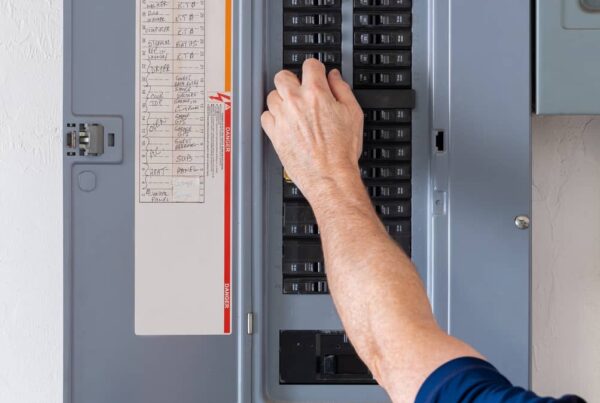
Two Prong or not two prong… that is the question! (Hah. Jokes.)
The Issue with Two-Prong Outlets
So of course, two prong outlets are missing something… a third slot! This third slot was developed to ground appliances and your home.
Grounding protects appliances, people, and everything else by providing an easy pathway for electricity to the Earth if there is a fault in the electric flow.
By the way, two prong outlets can also be an issue with insurance!
So what’s inside that third prong slot?
It’s basically a copper wire, that is then connected to the entire grounding of your home.
The issue with two-prong is that it shows that the house or that circuit is not grounded, which is a safety issue. Not to mention, code requires grounding.
In general, it is not against code to not have grounding, but it is against code to not to upgrade to grounding if you are pulling a permit. Furthermore, all homes being built today are required to be grounded.
So if your home is built before the 1960’s, there is a chance your home is not properly grounded. This can prohibit you from plugging in certain appliances that require grounding. Furthermore, this is a safety issue!
Does a surge protector or using a false three-prong outlet work?
Definitely not. If a home has just the three-prong outlet or a surge protector, there still is no ground wiring in the home.

How to Upgrade Two Prong Outlets

There are two ways to upgrade your two prong outlets to ensure they are grounded.
Replacing Outlets with GFCI outlets
GFCI outlets are required to be installed near water. They are named Ground Fault Circuit Interrupters and basically perform the same action as grounding, except it shuts power off if there is a fault rather than dispersing the electric flow to the ground.
Instead of rewiring your home to include grounding, you can replace every two prong outlet with a GFCI. However, you must label each outlet with “no equipment ground”. Furthermore, some appliances or computer equipment can sense there is no grounding and therefore, will not function.
Although replacing each outlet with a GFCI is much less costly than rewiring your home, it can provide some setbacks later on.
If you are interested in performing this yourself, The Family Handyman created a great step by step guide.
Rewiring Your Home
If you would rather spend more money to ensure your whole house is grounded, you will need to rewire all portions of your home with wires that include a ground wire. Furthermore, all outlets will have to be replaced with a proper 3-prong outlet.
Each new wire circuit will have to be traced to the sub/main electrical panels where the grounding system is finalized through a ground rod.
It is recommend to have a licensed electrician perform a rewire. The average cost to rewire a home is $10/square foot.
Depending on the age of your home, you might have other electrical issues you should think about upgrading. Check out this timeline for home issues.
Have a question? Comment below!



